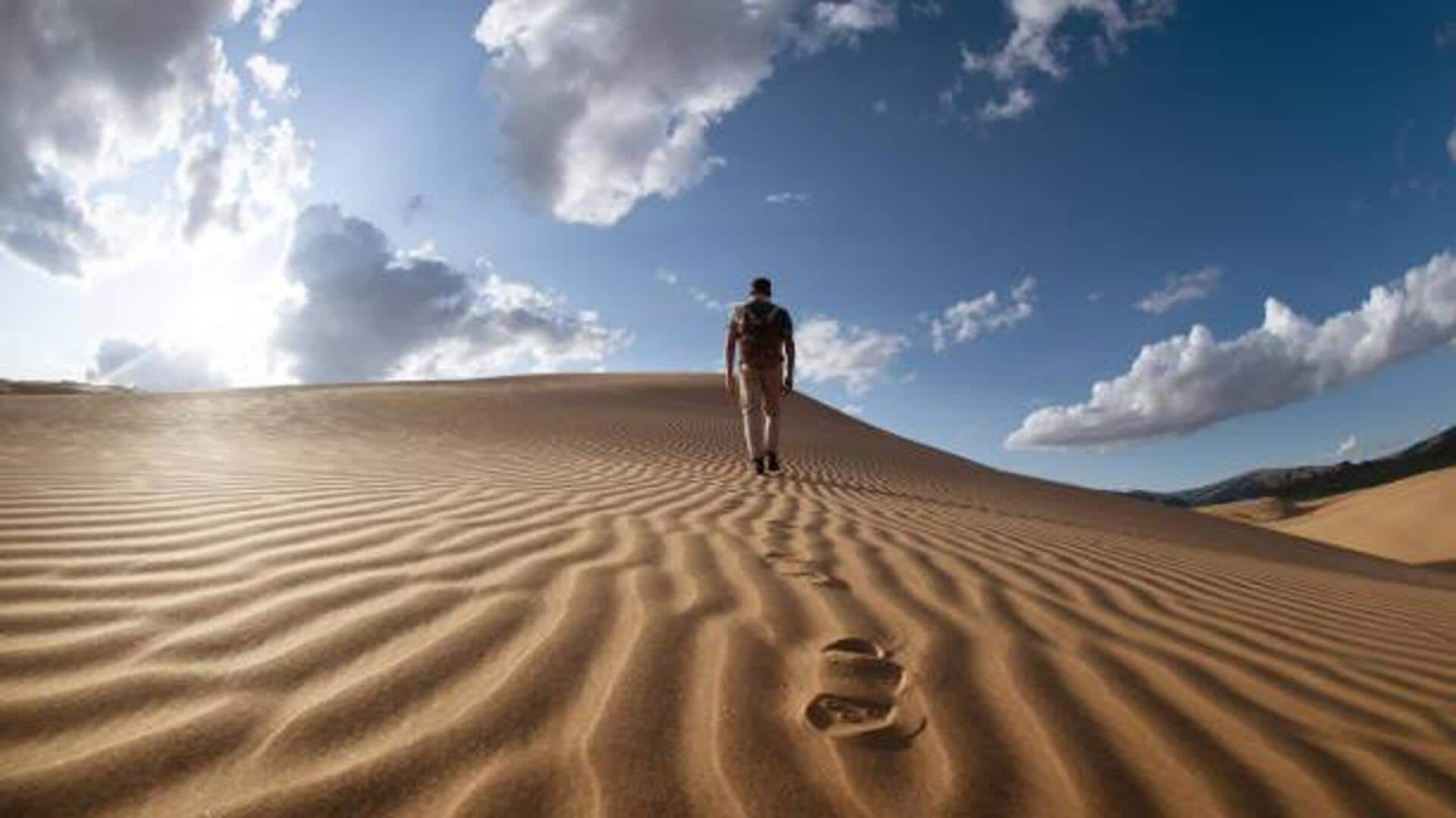
How to survive the Kalahari Desert
What's the story
The Kalahari Desert in Namibia offers an unparalleled challenge to survival enthusiasts. With its expanse and extreme conditions, bushcraft skills are a pre-requisite for anyone looking to survive in the desert. Not only do they help you navigate through the desert, they also keep you safe and resourceful in an environment where resources are limited. Knowing the fundamentals of bushcraft can be all the difference between a successful adventure and a tough ordeal.
Water discovery
Finding water sources
In the arid expanse of the Kalahari, finding water is paramount. Travelers must learn to look for signs of water presence, such as animal tracks or certain plants that flourish in proximity of moisture. Digging at dry riverbeds or collecting morning dew with cloths could yield small amounts of water. Knowing how to purify found water using basic filtration methods, makes it safe for drinking.
Shelter construction
Building shelter from natural materials
Creating a shelter is crucial to defend against extreme temperatures and wildlife. Using what you have at hand, like branches, leaves, and grass, simple but effective shelters can be erected. A-frame structures or lean-tos give protection from sun and wind while keeping the surroundings in sight. Placing shelters near natural windbreaks makes them more effective.
Plant foraging
Foraging edible plants
The Kalahari has a number of edible plants that can feed travelers when their food supply runs out. Identifying these plants correctly is crucial so that you don't end up eating something harmful. Succulents such as hoodia or wild melons can hydrate as well as feed you. Knowing local flora increases chances of finding food during longer trips.
Natural navigation
Navigating using natural landmarks
Without modern tools, navigation heavily relies on understanding natural landmarks and celestial bodies. Observing sun positions during different times would help you determine direction, while recognizing distinctive rock formations would aid in maintaining course accuracy. At night, stars would make for reliable guides; knowing key constellations would ensure consistent orientation throughout the journey.
Fire crafting
Starting fire with minimal tools
Fire crafting is essential for warmth, cooking, and signaling for help in emergencies. It requires few tools but is a skill to master along with knowing the environment. Mastering this technique boosts your survival chances by providing heat, making food safe to eat, and giving you a way to signal for help in unforeseen circumstances.